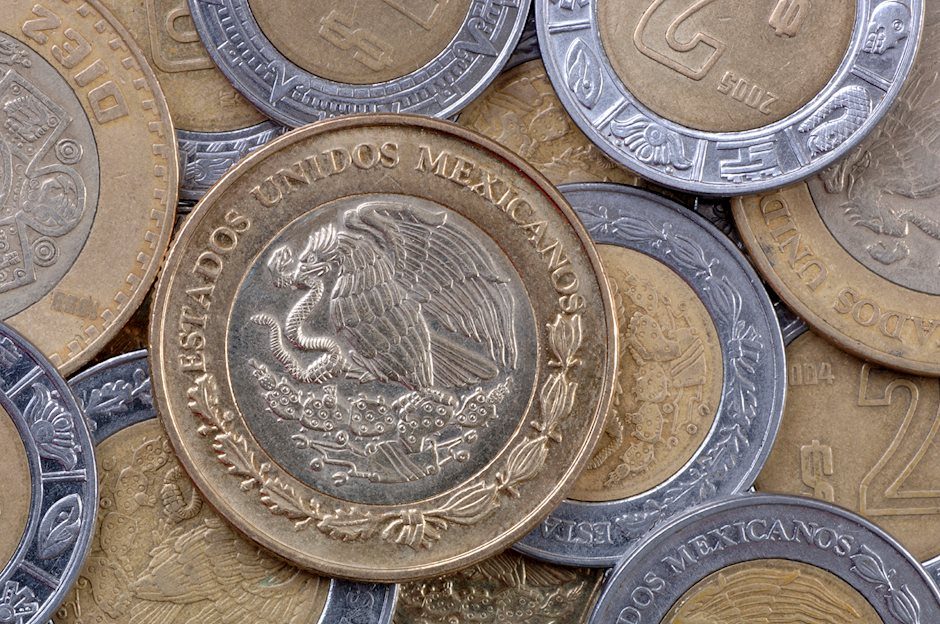Mexican Peso struggles amid domestic turmoil and teetering USD
- Mexican Peso grapples with losses amidst Mexico government's unexpected airport tariff changes, plummeting to a six-month low.
- Consumer Confidence in Mexico aligns with estimates yet reveals a subtle pessimistic shift among households.
- Mixed US data and a narrowing Trade deficit contrast with the Peso’s struggles, as USD/MXN hovers around 18.25.

Mexican Peso (MXN) finished its Thursday session with losses for the third time in the week against the US Dollar (USD) amidst a broad weakness for the buck. Still, news from Mexico weighed on the emerging market currency. At the time of writing, the USD/MXN is trading at 18.26, set to test the psychological 18.50 mark on Friday.
Summarizing developments during the day, the Mexican economic docket featured Consumer Confidence, aligned with estimates, but households turned slightly pessimistic about the economy. Overnight news revealed that the Mexican government aviation agency revealed changes on airport tariffs, sparking volatility in the Mexican Stock Exchange and exacerbating the Mexican Peso’s fall to a new six-month low, with the USD/MXN hitting 18.37.
Across the border, US data was mixed, with unemployment claims coming slightly below estimates but exceeding the week ending on September 23. the US Balance of Trade deficit narrowed in August compared to July’s data.
Daily Digest Market Movers: Mexican Peso to remain on the defensive, as the USD/MXN exchange rate oscillates around 18.25
- Mexico’s government to shift airport fees, spurring a plunge in the Mexican Stock Exchange.
- Consumer Confidence in Mexico came at 46.7 in September, unchanged from August.
- US Initial Jobless Claims for the week ending on September 30 advanced to 207,000, above the previous week’s 205,000, but trailed forecasts of 210,000.
- The US Balance of Trade showed a narrower deficit of $58.3 billion, below the $62.3 billion of the consensus and July’s $64.7 billion.
- US Exports rose by $256 billion, exceeding the previous reading of $251.9 billion.
- US Imports decreased to $314.3 billion from $316.6 in July.
- On Wednesday, the IMF raised Mexico’s growth projection in 2023 from 2.6% to 3.2% and from 1.5% foreseen in July to 2.1% for 2024.
- US ADP Employment figures came at 89,000, below forecasts of 153,000 ahead of Friday's official government Nonfarm Payrolls report.
- US ISM Services PMI came at 53.6, as foreseen by analysts, though moderately slowed down.
- Banxico’s September poll amongst economists reported that interest rates are expected to remain at 11.25% while inflation would dip to 4.66%.
- The same poll shows the exchange rate is set to finish at around 17.64, down from 17.75.
- Mexico’s S&P Global Manufacturing PMI for September came at 49.8, sliding to contractionary territory and below August’s 51.2, as the economy loses steam.
- The Bank of Mexico (Banxico) held rates at 11.25% in September and revised its inflation projections from 3.5% to 3.87% for 2024, above the central bank’s 3% target (plus or minus 1%).
- Banxico’s Government Board highlighted Mexico’s economic resilience and the strong labor market as the main drivers to keep inflation at the current interest rate level.
Technical Analysis: Mexican peso is set to challenge 18.50 in the near term
The daily chart shows that the Mexican Peso is set to extend its losses on Thursday. With the USD/MXN exchange rate hovering above the weekly high of 18.20, a decisive break above the April 5 high at around 18.40, the pair could extend its uptrend towards the April 2018 yearly low of 18.60. With those levels cleared, the next stop would be the March 24 high at 18.79, followed by the psychological 19.00 figure.
Interest rates FAQs
What are interest rates?
Interest rates are charged by financial institutions on loans to borrowers and are paid as interest to savers and depositors. They are influenced by base lending rates, which are set by central banks in response to changes in the economy. Central banks normally have a mandate to ensure price stability, which in most cases means targeting a core inflation rate of around 2%.
If inflation falls below target the central bank may cut base lending rates, with a view to stimulating lending and boosting the economy. If inflation rises substantially above 2% it normally results in the central bank raising base lending rates in an attempt to lower inflation.
How do interest rates impact currencies?
Higher interest rates generally help strengthen a country’s currency as they make it a more attractive place for global investors to park their money.
How do interest rates influence the price of Gold?
Higher interest rates overall weigh on the price of Gold because they increase the opportunity cost of holding Gold instead of investing in an interest-bearing asset or placing cash in the bank.
If interest rates are high that usually pushes up the price of the US Dollar (USD), and since Gold is priced in Dollars, this has the effect of lowering the price of Gold.
What is the Fed Funds rate?
The Fed funds rate is the overnight rate at which US banks lend to each other. It is the oft-quoted headline rate set by the Federal Reserve at its FOMC meetings. It is set as a range, for example 4.75%-5.00%, though the upper limit (in that case 5.00%) is the quoted figure.
Market expectations for future Fed funds rate are tracked by the CME FedWatch tool, which shapes how many financial markets behave in anticipation of future Federal Reserve monetary policy decisions.
Author

Christian Borjon Valencia
FXStreet
Christian Borjon began his career as a retail trader in 2010, mainly focused on technical analysis and strategies around it. He started as a swing trader, as he used to work in another industry unrelated to the financial markets.

















